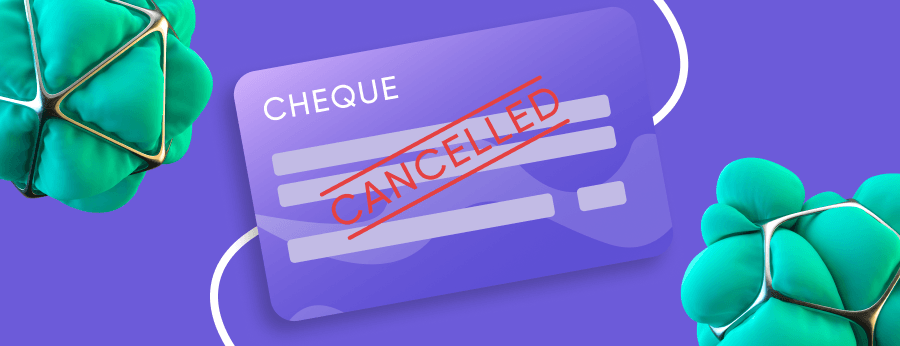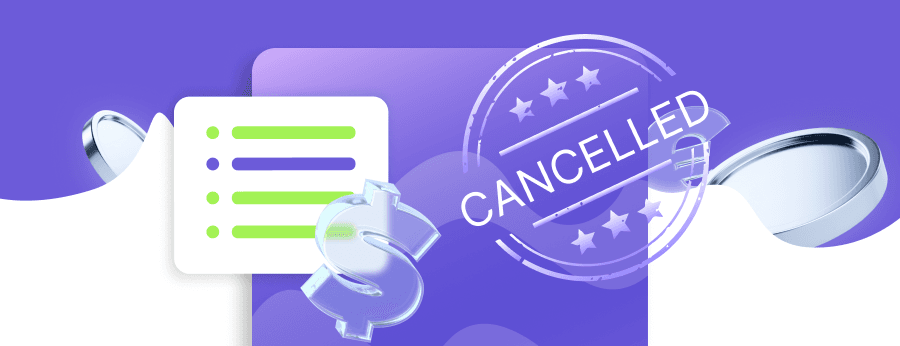Cancelled cheques are vital documents in various banking and commercial transactions. You may need one to open an account, set up a salary transfer or verify details for better online payment security. In these aspects, cancelled cheques play a crucial role, since they confirm your banking details. In this article, we explain what a cancelled cheque is, when you might need it, and how to write one correctly to avoid delays and confusion.
What is a Cancelled Cheque? Meaning
A cancelled cheque is a cheque that has been crossed out with two parallel lines and stamped with the word "CANCELLED." It provides crucial banking information, including the account number, account holder’s name, and IFSC code. While it cannot be used for financial transactions, it serves to verify your account details for various purposes.
Why is a Cancelled Cheque Important?
Although a cancelled cheque does not allow financial transactions, it plays a significant role in confirming your payment details. You may need a cancelled cheque in several situations, including:
- Opening a bank account;
- Setting up a salary account;
- Applying for loans;
- Starting insurance or investment services.
You may also need it if you are applying for an internet merchant account to ensure accurate fund transfers. However, it also depends on the operator you work with.
How to Write a Cancelled Cheque: Step-by-Step Guide

Writing a cancelled cheque includes just 5 simple steps. However, you must know the right algorithm to avoid possible mistakes. The step-by-step guide below shows how to prepare the document, display your banking information clearly, and keep it secure.
1. Select an unused cheque
Take your cheque book and choose one unused cheque. The chosen one must be unused. At this stage, make sure that it belongs to the bank account you use. It's vital to have matching data for a successful cancellation.
2. Draw two parallel lines
Use a pen and make two parallel lines across the paper. These lines must be placed from one corner to another, but without hiding important information. It indicates that the cheque is cancelled and prevents it from being used for payments or withdrawals.
3. Write "CANCELLED" clearly
In capital letters, write "CANCELLED" between the two lines. Use a dark ink pen to ensure clarity. This prevents the cheque from being used for any financial transaction.
4. Do not sign or fill in any other details
A cancelled cheque does not need you to write the date, amount, or payee information. Also, you do not need to sign it. Leaving these areas blank stops it from being treated as a legitimate payment tool or misused.
5. Ensure key account info remains visible
Make sure the lines or the "CANCELLED" mark don't hide the crucial information. The cheque must clearly show your name, account number, bank name, branch, and IFSC code. When you have to give a cancelled cheque, it helps to prevent mistakes.
What Information Does a Cancelled Cheque Show?
A cancelled cheque lets you share key bank details without enabling financial transactions. It demonstrates several vital facts:
- account holder’s name;
- bank name and branch;
- account number;
- IFSC code;
- MICR code.
This information helps to verify your bank account for payments, withdrawals, or setting up an account.
Common Use of Cancelled Cheques

Cancelled cheques are widely required for verifying your bank account information in various financial operations. They help speed up processes and reduce errors. Here are some common scenarios where you may need a cancelled cheque:
Account verification for KYC
Banks and companies may request a cancelled cheque during the KYC (Know Your Customer) process to verify your profile. Over 90% of financial institutions follow this standard method. It confirms the account number, IFSC code, and your name as the account holder.
Setting up ECS
Electronic Clearing Service allows automatic payments or receipts. A cancelled cheque is essential to link your bank statement. ECS is widely utilized for loan EMIs, utility bills, and mutual fund SIPs, with millions of transactions processed monthly in India. The UTR number generated in ECS transactions helps track each payment.
Loan processing
The lender requests a cancelled cheque to confirm your bank account information when you apply for a customised, house, or auto loan. It enables them to confirm your record before releasing money. In 2023–24, Indian banks issued over INR 15 lakh crore in loans, many of which needed this step.
Demat account opening
Investing in shares calls for a Demat account. Most banks and brokers ask for a cancelled cheque to verify your bank account. As of 2024, India has more than 15 crore Demat accounts, and a cancelled paper is included in the usual configuration.
Salary credit setup
To set up a direct salary deposit, companies must request a cancelled cheque. This guarantees that the right bank account receives the salary. Every year at onboarding, hundreds of new employees in major corporations submit cancelled checks for seamless monthly credit.
EPF withdrawal
Employees need a cancelled cheque when withdrawing funds from their Employees’ Provident Fund account. The EPFO processed over 6 crore claims in 2023-2024 with many requiring a cancelled cheque as proof of bank details.
Insurance and bill payments
Insurance providers and service companies often ask for a cancelled cheque to facilitate automatic premium or bill payments. It ensures that the correct bank account is linked to the payment system, making the process smoother and more reliable. With over 60 crore active insurance policies in India, this practice is widespread.
How to Get a Cancelled Cheque?
Getting a cancelled cheque is easy and can be done in just a few steps. Here’s how:
- Take a fresh cheque. Choose a blank, unused cheque from your cheque book linked to the correct bank account.
- Draw two lines. Use a pen to draw two parallel lines across the cheque from corner to corner.
- Write “CANCELLED”. Between the lines, clearly put the word “CANCELLED” in capital letters.
- Leave other fields blank. Do not write the date, amount, or payee data, and do not sign the cheque receipt.
- Check visible details. Ensure that the account number, account holder data, IFSC and MICR codes are clearly visible.
Following these steps ensures that your cancelled cheque safely shares your banking details without the risk of misuse.
Is It Safe to Share a Cancelled Cheque? Risks and Precautions
While it does not allow any transaction, it still contains sensitive bank details that must be protected. Organizations that handle such documents must also follow tokenization measures to ensure that sensitive information remains secure, especially when distributed digitally or utilized in online transactions.
Possible fraud or misuse
While a cancelled cheque cannot be used for payments, it still provides details like your account number, IFSC code, and account holder information. This data could be exploited by fraudsters for identity theft or creating fake documents. As a precaution, always be cautious about who you share your cancelled cheque with.
How to protect sensitive information
To reduce the risk, never share a cancelled cheque with unverified or unfamiliar parties. It is necessary to avoid uploading it online or sending it over unsecured channels. Always write “CANCELLED” clearly so that no one can edit it or use it for fraud. Organizations that handle such documents must also follow PCI compliance certification requirements, which primarily apply to cardholder data security but reflect general principles of secure data handling.
Tips for secure handling
Cancelled cheques may have certain risks. However, these tips will make your experience safer:
- Write "CANCELLED" in clear capital letters;
- Avoid adding any other marks, details, or signatures;
- Share the cheque only with trusted and verified parties;
- Never send it via public or unencrypted email channels;
- Keep a scanned copy only if absolutely necessary, and store it securely.
These steps help protect your bank details and cancel a cheque safely.
What to Do If You Lose a Cancelled Cheque?
Losing a cancelled document may not immediately result in financial loss, but it still contains sensitive personal details. It’s important to act quickly to reduce any risk of misuse or identity theft.
Contact your bank
Inform your bank immediately about the lost document. They can advise you on the next steps and place a note on your account to monitor any suspicious activity linked to it.
Monitor account activity
Keep an eye on your bank account for any suspicious or unlawful activity. If you see anything unusual, notify your bank immediately.
Request block of cheque series if needed
If the cheque is part of a numbered series, request your bank to block the series to prevent misuse.
Can You Cancel a Cheque Online or Digitally?
You can't cancel a paper cheque online after it has been written, but you can stop payment through a mobile app or internet banking. This helps in case the cheque gets lost or is used in the wrong way. This feature is typically available through online banking platforms or mobile apps as part of a bank’s secure stop-payment service.
Conclusion
A cancelled cheque is essential for daily financial tasks such as account creation, loan processing, and salary disbursement. Creating one is straightforward, but it’s crucial to handle it carefully to protect your banking information. Understanding its purpose and proper usage ensures that you can complete these tasks securely and efficiently.
Online Payment Company #1
Online payment solutions for all types of businesses since 2019
Subscribe to stay updated
on industry news, insights, and exclusive offers


